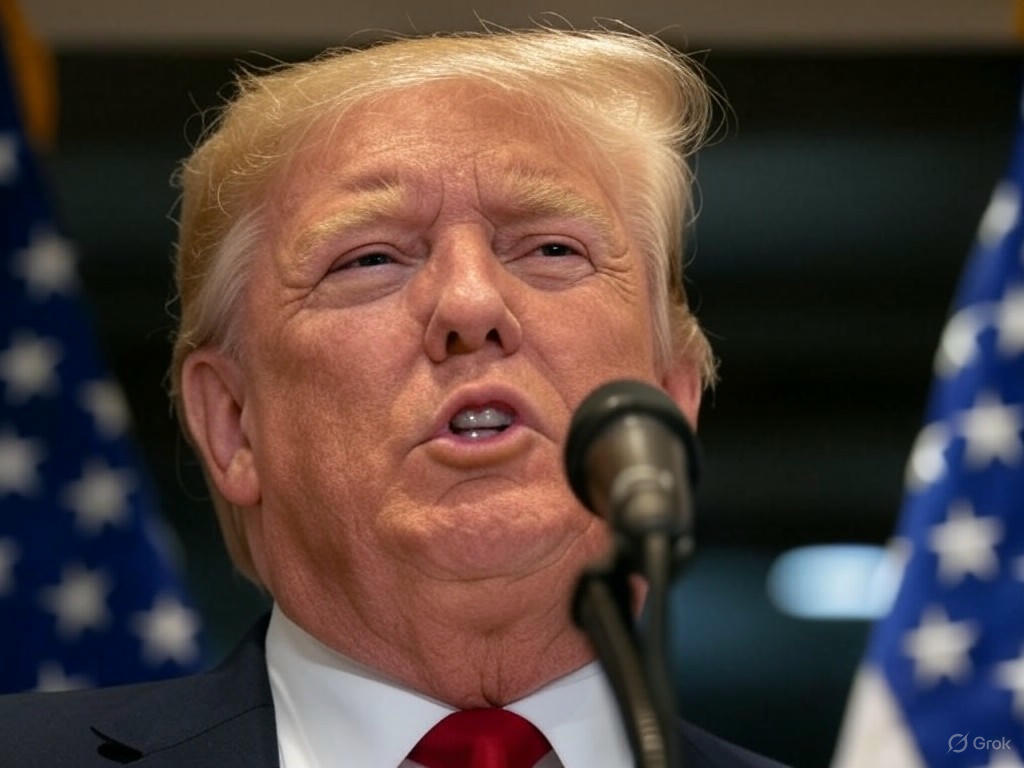Trump’s Bold Demand for Sweeping Interest Rate Reductions Sparks Debate
In a striking move that has sent ripples through financial markets, former President Donald Trump has publicly urged the Federal Reserve to implement a dramatic cut in interest rates, equivalent to a staggering 2.5 percentage points. This call for action, which translates to roughly ten standard rate cuts by the Fed’s typical incremental approach, comes amidst ongoing economic uncertainties and persistent inflation concerns. Trump’s outspoken stance has reignited discussions about the delicate balance between political influence and the independence of the central bank, raising eyebrows among economists and policymakers alike.
The former president’s remarks, delivered with his characteristic directness, target the Federal Reserve’s current leadership under Chair Jerome Powell. Trump has repeatedly expressed frustration over what he perceives as a lack of aggressive action to stimulate economic growth through lower borrowing costs. By advocating for such a substantial reduction, he argues that cheaper credit could fuel business investments, boost consumer spending, and counteract any looming slowdowns in the U.S. economy. His comments reflect a belief that the Fed has been overly cautious, potentially stifling opportunities for expansion at a time when bold measures might be warranted. This isn’t the first time Trump has clashed with the central bank; during his presidency, he frequently criticized Powell’s policies, often breaking with the tradition of respecting the Fed’s autonomy.
However, the feasibility and implications of such a massive rate cut are far from straightforward. Economists warn that slashing rates by 2.5 points could have unintended consequences, including the risk of overheating the economy or further inflating asset bubbles in markets already buoyed by years of low interest rates. Additionally, the Federal Reserve operates with a dual mandate of controlling inflation and maximizing employment, and a cut of this magnitude could signal a lack of confidence in the current economic trajectory, potentially spooking investors. Critics of Trump’s proposal argue that it overlooks the Fed’s data-driven approach, which considers a wide array of indicators before making policy decisions. They also point out that interest rates are already at relatively low levels compared to historical standards, leaving limited room for such drastic maneuvers without dipping into negative territory—an uncharted area for the U.S. economy.
On the other side, some business leaders and market analysts see merit in Trump’s push for lower rates, especially for industries sensitive to borrowing costs like real estate and manufacturing. They contend that a significant reduction could provide a much-needed jolt to sectors still recovering from global supply chain disruptions and geopolitical tensions. Yet, the overriding concern remains whether political pressure could undermine the Fed’s independence, a cornerstone of its credibility in managing monetary policy.
As this debate unfolds, all eyes are on the Federal Reserve’s next moves. Will it maintain its steady, measured approach, or will external voices influence its path? Trump’s latest remarks have undoubtedly intensified the spotlight on the central bank, ensuring that its decisions will be scrutinized more than ever in the months ahead. The intersection of politics and economics remains a contentious arena, and this latest chapter promises to keep stakeholders on edge.


